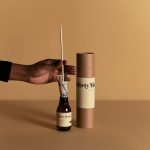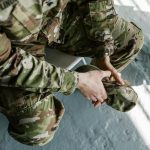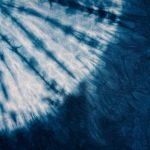You get unmatched safety and weather protection with waterproof Kevlar fabric, which combines exceptional strength—five times stronger than steel by weight—with water resistance and breathability. Lightweight and flexible, it keeps you agile while shielding against cuts, abrasions, and moisture. Advanced coatings and laminates enhance its waterproof capabilities without adding bulk. Whether you need durable gear for tough environments or everyday protection, this fabric delivers. Let’s explore how this innovative material works and where it excels.
Table of Contents
Key Takeaways
- Waterproof Kevlar fabric combines exceptional strength with advanced coatings or laminates that repel water while maintaining breathability and flexibility.
- Nanotechnology and laminated membranes enhance Kevlar’s water resistance without compromising its lightweight and durable properties.
- Industries like military, construction, and outdoor sports use waterproof Kevlar for protective gear that withstands harsh, wet environments.
- Proper care with mild cleaning and air drying preserves the fabric’s waterproof and protective qualities over extended use.
- Innovations in recycling and eco-friendly production ensure waterproof Kevlar remains sustainable while delivering reliable safety and weather protection.
What Makes Kevlar Fabric Unique
Kevlar fabric stands out because of its incredible strength and durability. When you wear or use Kevlar, you benefit from a material that’s five times stronger than steel by weight.
This strength comes from its unique molecular structure—long chains of molecules tightly packed and aligned, giving it remarkable resistance to stretching and tearing. You’ll find Kevlar is also lightweight and flexible, so it won’t weigh you down or restrict movement.
Plus, it resists heat and abrasion, making it ideal for tough environments. Whether for protective gear or industrial applications, Kevlar offers unmatched reliability.
Kevlar’s heat and abrasion resistance make it perfect for protective and industrial uses, ensuring lasting reliability.
When you choose Kevlar, you’re relying on a fabric engineered for safety and endurance without sacrificing comfort or practicality.
How Waterproofing Is Integrated With Kevlar
Although you might think adding waterproofing could compromise strength, manufacturers have developed methods to integrate water resistance without affecting Kevlar’s durability.
They typically apply specialized coatings or laminates that bond directly to the Kevlar fibers. These coatings form a thin, flexible barrier that repels water but still allows the fabric to breathe.
Another technique involves laminating a waterproof membrane onto the Kevlar, combining protection from moisture with the fabric’s inherent toughness.
You’ll also find that some waterproofing treatments use nanotechnology to create microscopic water-repellent surfaces without adding bulk. This way, the fabric maintains its lightweight feel and high tensile strength.
Key Advantages of Waterproof Kevlar Fabric
By combining water resistance with high durability, waterproof Kevlar fabric offers a unique set of benefits that enhance its performance in demanding situations.
Waterproof Kevlar fabric merges water resistance with strength for superior performance in tough conditions.
You get exceptional protection against water penetration without sacrificing the fabric’s renowned strength. This means you can rely on it to keep you dry while resisting tears, abrasions, and impacts.
Its lightweight nature guarantees you stay agile and comfortable, even during extended use. Plus, the fabric’s breathability helps prevent moisture buildup inside, reducing discomfort.
You’ll also appreciate its long lifespan, as it withstands harsh environments and repeated exposure to water without degrading.
Common Industries Using Waterproof Kevlar
Many industries rely on waterproof Kevlar to enhance safety and durability in challenging environments.
If you work in construction, you’ll find Kevlar’s protective qualities invaluable for gear like gloves and jackets, shielding you from cuts and wet conditions.
In the military and law enforcement sectors, waterproof Kevlar is essential for body armor, keeping personnel safe while ensuring comfort during outdoor operations.
Outdoor sports and adventure companies use it to produce rugged, weather-resistant equipment, so you can trust your gear during intense activities.
Even the automotive industry incorporates waterproof Kevlar into tire reinforcements and protective covers to boost longevity.
Performance in Extreme Weather Conditions
Industries that depend on waterproof Kevlar know it’s designed to withstand harsh environments, but how does it hold up when weather conditions turn extreme?
Waterproof Kevlar stands strong even when weather shifts to the most extreme conditions.
You’ll find that this fabric excels in keeping you protected, whether it’s blistering heat, freezing cold, or relentless rain. Its durability and water resistance are key to maintaining safety and comfort.
Here’s what you can expect in extreme weather:
- Heat resistance: Kevlar won’t degrade or lose strength under high temperatures, so you stay safe in scorching environments.
- Cold tolerance: It remains flexible and strong even in freezing conditions, preventing cracks or brittleness.
- Waterproofing: Repels heavy rain and moisture, keeping you dry without sacrificing breathability.
With waterproof Kevlar, you’re ready to face the elements head-on.
Care and Maintenance Tips for Longevity
Although waterproof Kevlar is built for toughness, you’ll want to follow proper care and maintenance to keep it performing at its best.
Always clean the fabric gently with mild soap and cold water; avoid harsh detergents or bleach that can degrade the fibers.
After washing, air dry it away from direct sunlight or heat sources to prevent damage.
Store your Kevlar fabric in a cool, dry place, folded loosely to avoid creases that might weaken the material over time.
Inspect regularly for signs of wear or abrasion, addressing small issues promptly to extend its life.
Comparing Waterproof Kevlar to Other Protective Fabrics
When choosing protective fabrics, you’ll want to compare durability and strength, water resistance levels, and how comfortable and flexible each option feels.
Waterproof Kevlar stands out in many of these areas, but other materials might offer different benefits.
Let’s see how they measure up against each other.
Durability and Strength
While many protective fabrics offer reliable strength, waterproof Kevlar stands out for its exceptional durability and resilience.
When you choose waterproof Kevlar, you’re investing in a material designed to endure tough conditions without compromising safety or comfort.
Here’s why it excels compared to other fabrics:
- High tensile strength: Kevlar fibers resist tearing and punctures far better than nylon or polyester blends.
- Long-lasting wear: It withstands abrasion and repeated use, maintaining integrity over time.
- Lightweight yet tough: Despite its strength, it doesn’t weigh you down, unlike heavier protective fabrics.
Water Resistance Levels
Since staying dry is crucial in many demanding environments, understanding how waterproof Kevlar compares to other protective fabrics in water resistance levels is important.
When you choose waterproof Kevlar, you get a fabric that resists water penetration effectively, thanks to its tight weave and specialized coatings. Unlike standard nylon or cotton blends, which may soak through or require frequent reapplication of treatments, waterproof Kevlar maintains its barrier even under prolonged exposure.
Compared to Gore-Tex or other membrane-based fabrics, Kevlar offers similar water resistance but with added durability against abrasions and tears. If you need reliable protection without sacrificing toughness, waterproof Kevlar stands out.
It guarantees you stay dry while facing harsh conditions, outperforming many conventional fabrics in sustained water resistance.
Comfort and Flexibility
Although waterproof Kevlar excels in durability and water resistance, you might wonder how it holds up in comfort and flexibility compared to other protective fabrics.
When you wear Kevlar, you’ll notice it’s stiffer than fabrics like nylon or polyester, which means it can feel less flexible initially. However, manufacturers have improved its weave for better comfort without sacrificing protection.
Here’s how it compares:
- Breathability: Kevlar is less breathable, so you might feel warmer during extended use.
- Flexibility: It offers good resistance to stretching but isn’t as stretchy as fabrics like spandex blends.
- Weight: Waterproof Kevlar tends to be heavier, which can affect your mobility.
Innovations in Kevlar Fabric Technology
As you explore the latest advancements in Kevlar fabric, you’ll discover how engineers have enhanced its waterproof capabilities without sacrificing strength or flexibility. New weaving techniques and nanotechnology coatings make the fabric resistant to water while maintaining durability. You’ll also find that the integration of breathable membranes keeps you dry and comfortable. These innovations improve performance for both safety gear and outdoor apparel.
| Innovation | Benefit |
|---|---|
| Nano-coatings | Water repellency with breathability |
| Advanced weaving | Enhanced flexibility and strength |
| Laminated membranes | Waterproof yet breathable |
| Hybrid composites | Lightweight and impact resistant |
These breakthroughs guarantee you get reliable weather protection with Kevlar’s trusted toughness.
Environmental Impact and Sustainability Considerations
When choosing waterproof Kevlar fabric, you should consider how eco-friendly its production methods are.
You’ll also want to look at how recyclable the material is to minimize waste.
These factors play a big role in reducing the overall environmental impact.
Eco-Friendly Production Methods
Because waterproof Kevlar fabric combines durability with protective qualities, its eco-friendly production methods play a crucial role in reducing environmental impact.
When you choose waterproof Kevlar, you’re supporting processes that minimize waste and conserve resources.
Manufacturers focus on:
- Using water-based adhesives instead of harmful solvents to cut down on toxic emissions.
- Implementing energy-efficient machinery that lowers carbon footprints during fabric production.
- Sourcing raw materials from responsible suppliers committed to sustainable harvesting.
Recyclability and Waste Reduction
Although waterproof Kevlar fabric offers exceptional strength and protection, its recyclability and waste reduction potential make it even more appealing for environmentally conscious users.
You can feel confident knowing that manufacturers are developing methods to recycle Kevlar fibers, reducing landfill waste. By reprocessing scrap and worn-out materials, they minimize environmental impact while conserving valuable resources.
When you choose products made from recycled Kevlar, you support a circular economy that values sustainability. Additionally, Kevlar’s durability means you won’t need to replace items frequently, cutting down on overall waste.
As technology advances, expect more efficient recycling techniques to emerge, making it easier for you to contribute to waste reduction.
Embracing waterproof Kevlar fabric means prioritizing safety without compromising your commitment to the environment.
Future Trends in Protective and Waterproof Textiles
As technology advances, you’ll see protective and waterproof textiles evolving to offer greater durability, flexibility, and environmental sustainability.
Innovations will focus on enhancing the performance of materials like Kevlar, making them lighter and more comfortable without sacrificing safety.
You’ll notice smart textiles integrating sensors that monitor health and environmental conditions, adding a new layer of protection.
Expect increased use of eco-friendly production methods and recyclable fibers to reduce environmental impact.
Key future trends include:
- Nano-coatings for improved water resistance and breathability
- Integration of wearable tech for real-time hazard detection
- Development of biodegradable or fully recyclable protective fabrics
Frequently Asked Questions
Can Waterproof Kevlar Fabric Be Dyed or Customized in Different Colors?
You can dye or customize waterproof Kevlar fabric, but it’s tricky since Kevlar resists traditional dyes. You’ll need specialized processes or surface treatments to add color without compromising its strength or waterproof qualities.
Is Waterproof Kevlar Fabric Safe for People With Sensitive Skin?
If you have sensitive skin, you might find waterproof Kevlar fabric a bit rough since it’s designed for durability. However, with proper lining or treatment, it can be safe and comfortable for you to wear.
How Does Waterproof Kevlar Fabric Perform in Terms of Breathability?
You’ll find that waterproof Kevlar fabric isn’t very breathable since its waterproof layer blocks airflow. While it keeps water out effectively, it might trap heat and moisture, making it less comfortable during extended wear in warm conditions.
What Is the Average Cost of Waterproof Kevlar Fabric per Yard?
You can expect to pay around $50 to $100 per yard for waterproof Kevlar fabric. Prices vary based on quality and supplier, so it’s smart to compare options before you make your purchase decision.
Can Waterproof Kevlar Fabric Be Recycled or Repurposed After Use?
You can recycle or repurpose waterproof Kevlar fabric, but it’s tricky due to its durable fibers. Consider upcycling it into gear or accessories instead of traditional recycling, which isn’t widely available or efficient yet.
- The Use of Nonwovens in Construction and Civil Engineering - July 11, 2025
- The Use of Nonwovens in Construction and Civil Engineering - July 11, 2025
- The Use of Nonwovens in Construction and Civil Engineering - July 11, 2025







